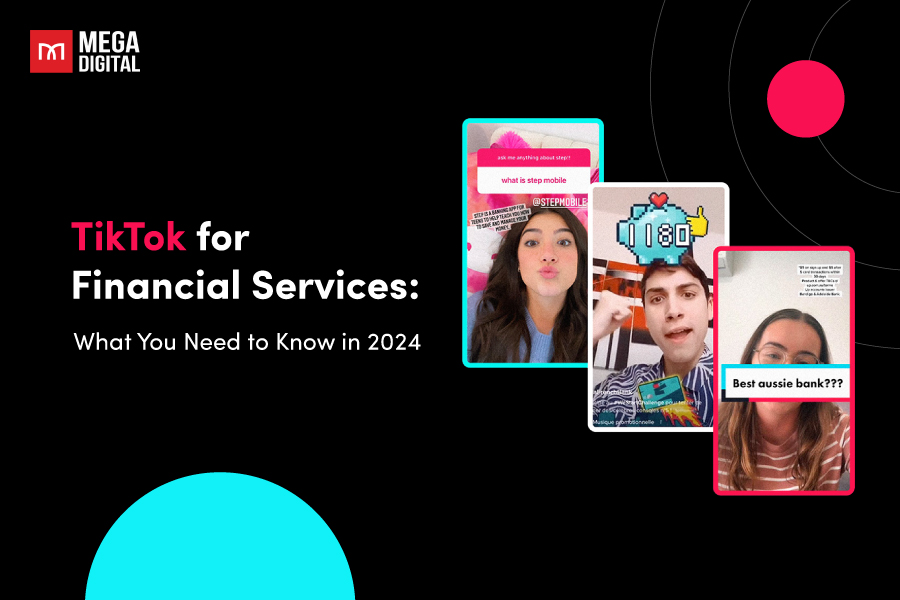Wondering what the TikTok Event API is and how it can take your TikTok ads to the next level? You’re in the right place. In this article, we’ll break it all down for you. The TikTok Event API helps you track user actions, connect your data effortlessly, and boost your ad performance. Let’s dive in and see how it works!
What is TikTok Events API?
TikTok Events API is like a special set of tools from TikTok for businesses. It helps them share data that occurs on their servers, websites, apps, or CRMs with TikTok, making a strong connection between TikTok and advertisers’ data.
What’s cool about TikTok Events API is that it’s flexible, so advertisers can choose what info they want to share with TikTok. It’s like a handy way for TikTok and businesses to work together smoothly.
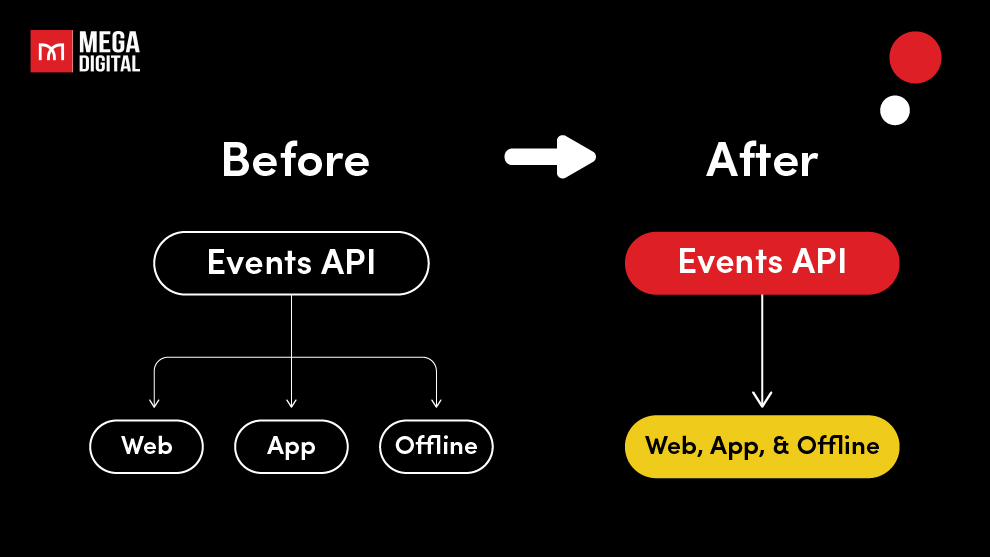
Previously, TikTok had separate endpoints for Web, Offline, and App, requiring independent integrations. Now, advertisers can integrate once, streamlining the process and making it more efficient. This update aims to simplify integration, improve security, and enhance advertising efficiency, reducing entry barriers and making the Events API more accessible for advertisers across various marketing use cases.
Now you might be thinking, this is still a bit vague, and what exactly does this “TikTok Events API” thing do for you? Simply put, TikTok Events API helps you track user actions more accurately, optimize ad delivery, build targeted audiences, and measure ad performance with precision. When paired with the TikTok Pixel, it becomes even more effective.
TikTok Events API Example
When businesses use TikTok Events API to share events, it provides essential insights for advertisers. These insights include the ability to measure how well ads are performing on TikTok, optimize strategies for delivering ads, and create precise target audiences for more effective advertising. Let’s take a look at this example:
You are running an online clothing store and want to track user interactions on your website when people view a particular product or make a purchase. By integrating TikTok Events API, you can seamlessly share these events with TikTok. Here’s how TikTok Events API works:
- Event 1: A user views a specific product on your website.
- Event 2: A user purchases on your website
- Integration: TikTok Events API captures all events and sends them to TikTok.
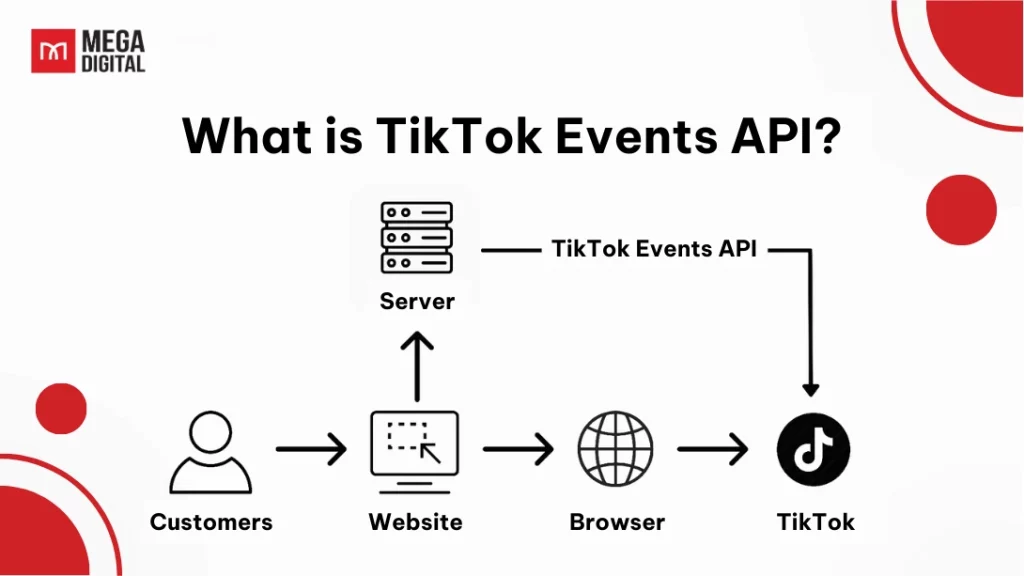
Now, with TikTok having insights into these events, you, as an advertiser, can:
- Measure ad performance: Understand how TikTok ads contribute to product views and purchases.
- Optimize ad delivery: Use the data to enhance the delivery of your ads to users who are more likely to engage or make purchases.
- Create target audiences: Build precise target audiences based on user interactions, ensuring your ads reach the right people.
This integration allows TikTok advertisers to gather valuable data, improve ad strategies, and enhance the overall effectiveness of their advertising campaigns on the platform.
The Benefits of Events API
We’ve mentioned what TikTok Events API do for you above, but let’s explore more in-depth about how it helps you tackle certain issues.
Capture more conversions
Issue: Sometimes, conversions reported through the Pixel may not be accurate due to technical problems.
Solution: Events API helps capture those missing conversions, providing a clearer picture of user actions. This means better measurement, optimization, and targeting for your ads.
Control what you share
Issue: You might want more control over the data you share with TikTok.
Solution: Events API lets you decide exactly what data to share, ensuring you share only what’s necessary to achieve your marketing goals using TikTok’s optimization features.
Stay strong amid changes
Issue: The advertising world is always evolving, and sudden changes can be challenging.
Solution: TikTok Events API creates a strong and reliable link between your business and TikTok. This means you can adapt better to changes in the advertising industry by:
- Customize the data you share with TikTok Events API to fit your goals.
- Use the insights to improve your ads.
- Combining it with the Pixel ensures a smoother transition while keeping your current advertising strategies intact.
- Make quick adjustments based on performance.
- Consistently refine your ads for ongoing success.
How to Set Up TikTok Events API?
If you’ve worked with server-to-server APIs before with other platforms, you can likely use a similar process and methods for sharing Event data with TikTok’s Events API. It’s like applying what you already know to this new situation. However, if this is your first time dealing with server-to-server APIs, don’t worry!
Here are the steps to handle this process smoothly:
Step 1: Figure out what data you need
Identify the specific Events, Parameters, and Match Keys that align with your marketing goals. This step involves discussing with your legal and technical teams to ensure everything aligns with your objectives and follows the rules.
Step 2: Choose how to integrate
Decide on the integration method that suits your business:
- Third-party commerce partner integration (e.g., Shopify, WooCommerce)
- Third-party data partner integration (e.g., Tealium, Segment)
- Direct API integration
Ensure you have the right resources by coordinating with your internal teams.
Step 3: Set up your Events API
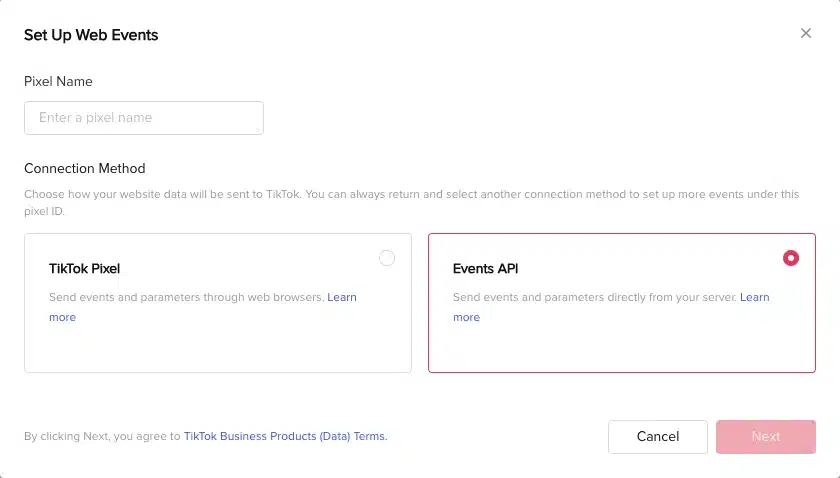
Choose whether to set up Events API by itself or alongside your TikTok Pixel. Follow TikTok’s advice for the best setup. Check the documentation for tips on avoiding duplicate events if you’re using Events API with your TikTok Pixel.
Step 4: Understand the technical details
Take some time to go through the technical documentation based on the integration method you chose:
- Partner integration: Learn about TikTok Partners integrated with Events API.
- Direct API integration: Share our Developer Documentation with your development team to make sure they follow the best practices.
Step 5: Make sure you’re following the rules
Have your legal team review TikTok’s Privacy and Data Usage policies and terms. Understand how your shared data is used (TikTok Business Products (Data) Terms) and how TikTok respects user privacy settings (Safety Center).
Step 6: Create a project timeline
Plan out the timeline for your project. This should cover approvals, integration setup, and any in-house development or partner engagement. This step helps keep everything on track.
Step 7: Put your plan into action
Once everything is set up internally, it’s time to implement Events API. You can do this through a 3rd Party partner or by using your in-house technical teams (Dev, MarTech, AdOps, etc).
Step 8: Double-check your setup
Before calling it done, use TikTok’s Web Diagnostics tools to make sure your Events API setup is working as it should. This last step helps you confirm that everything is running smoothly.
Mega Digital’s Pro Tips for Using TikTok Events API
Utilize both TikTok Pixel and Events API
A recommended practice from TikTok is to combine Events API integration with an existing TikTok Pixel integration. Using both for web conversions in TikTok Ads Manager gives you flexibility in adapting to advertising changes.
To make the connection seamless, use both TikTok Pixel and Events API together, ensuring consistent event tracking across the user journey and maximizing match rates by passing relevant match keys.
This approach provides valuable insights into user behavior and enhances ad delivery, audience creation, and overall measurement capabilities.
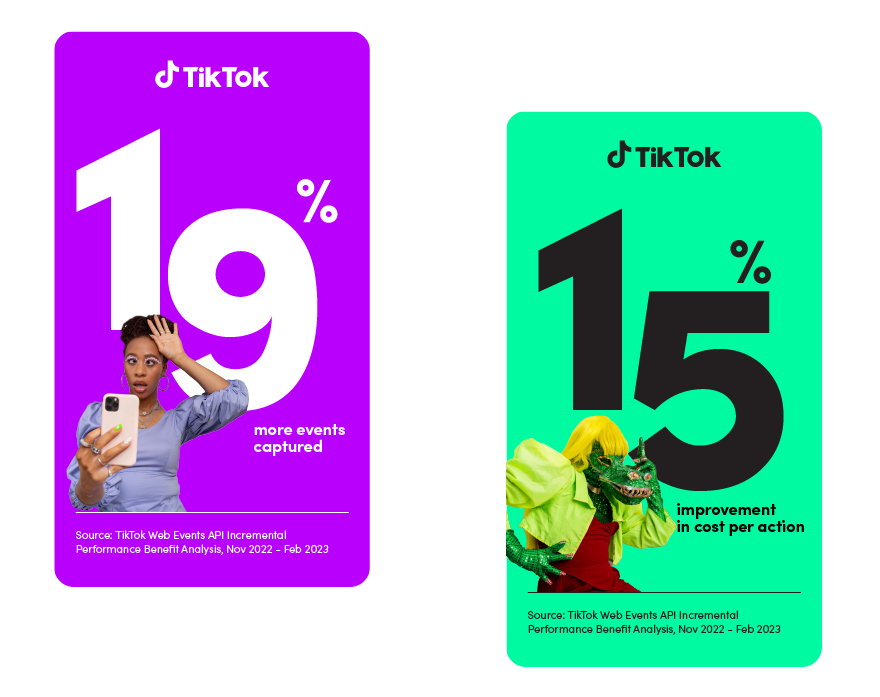
Advertisers using TikTok Pixel and Events API together observe a 19% rise in captured events and experience a 15% enhancement in CPA (cost per action). This integration enhances ad delivery and audience creation and provides comprehensive measurement capabilities.
The combined strength of these connections ensures a wealth of event signals, empowering your campaigns with superior optimization and delivering impactful results.
Granular data control
To comply with privacy standards and optimize your data sharing, identify specific events and conversions you want to track. Use TikTok’s event parameter options to customize data granularity, ensuring you only share data relevant to your marketing objectives. Regularly review and refine the data you share to maintain efficiency.
Server-side integration
For enhanced conversion tracking, improved data security, and optimized performance, consider server-side integration. Choose a server-side tracking solution compatible with TikTok Events API, configure your server to send events directly to TikTok’s server, and rigorously test and validate your setup for accuracy and performance.
Generate access token
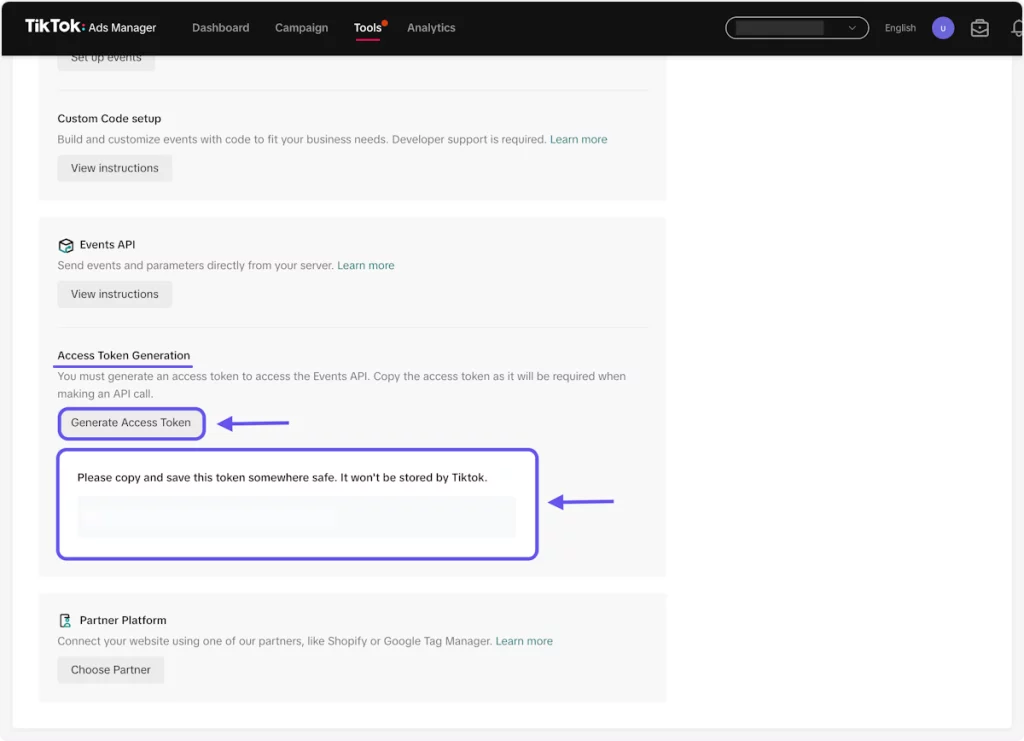
Ensure a secure connection between your server and TikTok’s server by generating an access token. Follow TikTok’s security guidelines for token generation, store it securely, and only share it with authorized personnel. Monitor access and revoke the token if compromised or no longer needed.
>>> Read more: TikTok Developers API: How to Integrate TikTok into an App
Customize for deeper insights with event parameters
Customize event parameters to capture specific actions and user interactions beyond basic event types. This enables improved audience segmentation and enhanced campaign optimization. Define relevant event parameters for each event, utilize dynamic values for personalized data capture, and continuously test and refine your configuration for optimal data quality.
Use TikTok Event Deduplication
Event deduplication on TikTok works to eliminate repeated events and ensure accurate measurement. To enable deduplication, advertisers should include the Event ID (event_id) parameter across their events using both Pixel and Events API.
Let’s dive into a breakdown of how deduplication functions:
How deduplication works
To initiate deduplication, advertisers must share the Event ID (event_id) parameter across their events through both Pixel and Events API. If TikTok identifies overlapping events, it records the first event received for measurement and reporting.
Deduplication scenarios
- Overlapping Pixel Events: Deduplication occurs for identical Pixel events within a 48-hour window from the first event.
- Overlapping Events API Events: Deduplication takes place for identical Events API events within a 48-hour window from the first event.
- Overlap Between Pixel and Events API Events: Events with identical parameters arriving within 5 minutes merge, incorporating extra match keys and parameters. Subsequent events within 48 hours deduplicate, prioritizing the first event.
How to set up deduplication
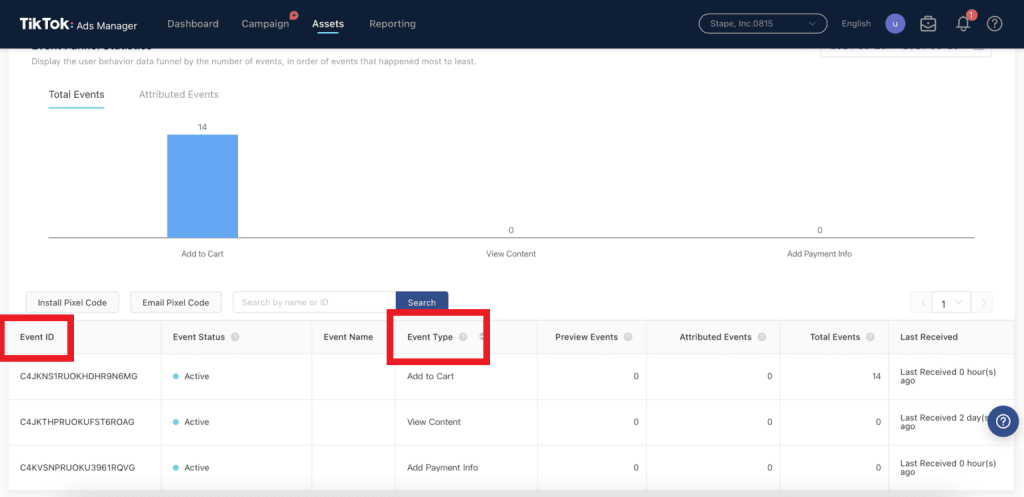
You should include 3 parameters in the event payload for deduplication through both Pixel and Events API:
- pixel id
- event type (e.g., CompletePayment or AddToCart)
- event_id (a unique string chosen by the advertiser to represent visitor conversion).
Final word
That covers the essentials of TikTok Events API. By securely capturing events, advertisers gain valuable insights for audience targeting, product optimization, and precise measurement. Setting up TikTok Events API provides a user-friendly path to enhance your events campaign. If you ever need assistance, feel free to reach out to us — we’re TikTok’s official partner. Our team of experts is ready to offer effective solutions and support for any challenges you may encounter.






